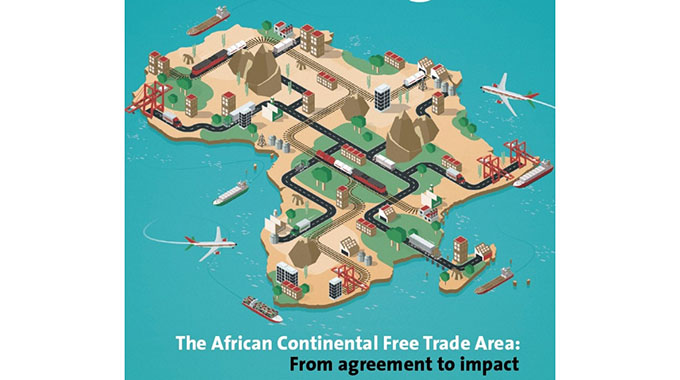Zimpapers in strong Q2 recovery
Zimbabwe’s integrated media house, Zimpapers (1980) Limited, managed to recover both volumes and revenues in the second quarter of 0the year, after a difficult first quarter, and is confident about sustaining the growth trajectory, riding on spinoffs from Government interventions to stabilise the economy.
The overall group financial performance for the half-year period to June 30, 2024 was severely affected by the harsh first quarter of the year, prompting authorities to intervene with stabilisation measures, including onboarding a new currency, Zimbabwe Gold (ZiG).
“It is against this background that the group recovered both volumes and revenues in the second quarter of the year.
“This had a significant positive impact on the overall group financial performance where the group’s top line for the second quarter increased by 35 percent to ZiG92,7 million from ZiG68,7 million for the first quarter,” group finance director, Farai Matanhire said.
He said that the improvement in the group’s financial performance was driven by volume recovery as print advertising grew by 11 percent, as radio saw 9 percent growth while ZTN registered a 29 percent improvement compared to the same period last year.
“These volume and revenue recoveries in the second quarter were not good enough to reverse the decline that had been recorded in the first quarter of the year,” he noted.
Group chairperson, Doreen Sibanda, said in a statement of the financials for the half-year period, that the group recorded positive volume outturn of 132 percent driven by the low-value labels from the Commercial Printing Division, which grew by 141 percent when compared to the same period last year.
She said due to the very competitive operating environment that exerted pressure on average prices, the revenue for the group marginally declined by 1 percent to ZiG161,4 million compared to ZiG163,8 million for the same period last year. The financials for the interim period show that revenue decline was recorded by all the operational divisions of the group except Commercial Printing, which registered a 4 percent growth.
“In response to the tight volume performance because of the low disposable incomes, management had to strengthen cost management practices resulting in a ZiG9,5 million saving in operating costs.
“Major savings of ZiG5,6 million was recorded from cost of sales while ZiG3,9 million came from overheads. This had a positive impact of turning the operating profit before net financing and exchange movements to ZiG1,2 million compared to a loss of ZiG5,4 million for the same period last year,” said Sibanda.
Furthermore, the cost of financing was significantly reduced to ZiG1,1 million from ZiG3,2 million for the comparable period in 2023. In terms of profit before tax, Matanhire said the group turned around the corner from a loss of ZiG7,7 million for the first quarter to a profit of ZiG 6,1 million in the second quarter owing to volume and revenue recoveries.
“The group recorded a profit from operations before exchange movements and financing cost of ZiG1,2 million compared to a loss of ZiG5,4 million for the same period in prior year. To that effect, an Earnings, Before Interest, Tax, Depreciation and Amortisation (EBITDA) margin of 4 percent was recorded for the period under review,” he said.
Matanhire said the newspaper division was on a recovery path following the 11 percent increase in advertising volumes in the second quarter.
The division recorded 1 percent revenue drop to ZiG93,9 million compared to ZiG95.1 million for the same period last year mainly affected by volume performance for the division that declined by 16 percent when compared to the same period last year.
He noted that following the currency stability that came in the second quarter of the year, the division recorded a 9 percent volume recovery compared to the first quarter.
“On a positive note, clients preferred to spend more on our national radio station, Star FM, which recorded a 7 percent volume growth,” he said.
According to Sibanda, the media environment continued to evolve, and the digital audience has expanded substantially, while the radio audience remains robust, effectively compensating for the continued stagnation in the printed newspapers.
Despite this, she said a considerable segment of the audience still valued printed copies, providing advertisers with a reliable marketing platform.
Sibanda said younger audiences, mirroring global patterns, are increasingly turning to digital platforms, consuming content at their convenience, and this shift necessitates a strategic focus on digital engagement to capture and retain this demographic.
“Work is going on to transform our newsroom to become digital-first while continuing to make the necessary investments into print and broadcasting,” she said.
Sibanda said despite the growing competition, the latest Zimbabwe All Media Products Survey report underscored the group’s dominant position.
“Our newspapers remain the most read, and our radio stations lead in urban markets. ZTN has also extended its reach, consolidating our presence across multiple media channels,” she said.
Globally, Sibanda said the media landscape was witnessing a pronounced shift towards digital platforms and online streaming services, resulting in a surge in on-demand content consumption; hence, as a diversified media company, the group is proactively adapting to these trends.
“We have invested significantly in digital platforms, enabling us to reach a broader audience. Fully-fledged digital teams within our newspaper, radio, and television units are driving this digital growth,” she said.
The group’s digital footprint, she said, had grown to 9,7 million users across the mainstream digital platforms, adding that Zimpapers remained the leading media house in the country.
“The popularity of our radio stations has seen us breaking local media records by attaining the highest social media following, engagement, and impressions. We have taken a deliberate approach to direct the substantial social following to our websites, subsequently increasing website traffic for the benefit of our advertisers,” she said.
Sibanda said looking at the short term, the company’s digital evolution continues with more thrust as the company explores and implements the industry’s emerging trends, such as the development and deployment of “AI-powered” newsrooms, news convergence, and real-time digital storytelling.
“Our objective is to ensure media sustainability while providing quality, fact-checked content for our audiences across all the mainstream digital platforms,” she said.
In terms of corporate social investment, Sibanda said Zimpapers remained steadfast in its commitment to improving the lives of its communities, as the company believed that corporate success was inextricably linked to their well-being.-ebsinessweekl









